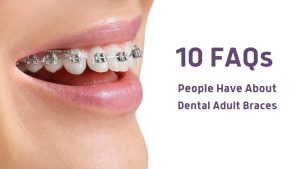10 Easy Facts About Legacy Orthodontics Shown
10 Easy Facts About Legacy Orthodontics Shown
Blog Article
Some Known Questions About Legacy Orthodontics.
Table of ContentsWhat Does Legacy Orthodontics Do?The smart Trick of Legacy Orthodontics That Nobody is Talking AboutSome Known Incorrect Statements About Legacy Orthodontics The Best Strategy To Use For Legacy OrthodonticsThe Greatest Guide To Legacy Orthodontics
At Advanced Orthodontics, we provide individuals with a holistic treatment experience. Furthermore, we provide flexible therapy schedules, adaptable repayment options and an enjoyable, enjoyable experience. leesburg orthodontist. Call ( 480) 357-4900 today to learn more and schedule an appointment.An orthodontist is a dental practitioner trained to identify, stop, and treat teeth and jaw abnormalities. Orthodontists function with people of all ages, from kids to adults.
Malocclusion, or misaligned teeth, can result in oral issues, including dental cavity, periodontal illness, and challenging or agonizing chewing. But not everybody is birthed with straight teeth. If you have a poor bite or huge spaces in between your teeth, you may wish to speak with a dental practitioner focusing on orthodontic treatment.
Some Known Details About Legacy Orthodontics
( Photo Credit Score: DigitalVision/Getty Images) Orthodontists utilize taken care of and removable dental gadgets, like dental braces, retainers, and bands, to alter the placement of teeth in your mouth. Orthodontic therapy is for oral irregularities, including: Misaligned teethBite problems, like an overbite or an underbiteCrowded teeth or teeth that are also much apartJaw misalignmentThe goal of orthodontic treatment is to enhance your bite.
A healthy bite ensures you can eat, chew, and speak correctly. While you might think of orthodontists as generally for children or teens who require braces, they can deal with dental issues at any kind of age. Orthodontists go to university, dental school, and orthodontic institution. After college graduation, they spend 2 or 3 years in an orthodontic residency program.
, however not all dental professionals are orthodontists. They focus on 2 areas: Just how to effectively and securely relocate teeth Exactly how to effectively direct growth in the teeth, jaw, and faceOnce an orthodontist has finished training, they have the alternative to come to be board certified.
See This Report about Legacy Orthodontics
Malocclusion leads to tooth overcrowding, a misshapen jaw, or irregular bite patterns. Malocclusion is normally treated with: Your orthodontist affixes metal, ceramic, or plastic square bonds to your teeth.
Some individuals require a headwear to help move teeth right into line with pressure from outside the mouth. A retainer is a personalized device that keeps your teeth in location.
They're usually used on youngsters. They can create additional area in the mouth without having to pull teeth. If you have a major underbite or overbite, you might need orthognathic surgery (additionally called orthodontic surgery) to lengthen or reduce your jaw. Orthodontists make use of cords, medical screws, or plates to sustain your jaw bone.
You may require to see an orthodontist if you have: Crowding or not sufficient area for all of your teethOverbite, when your upper teeth come your bottom teethUnderbite, when your bottom teeth are as well far forwardSpacing or concerns with gapsCrossbite, which is when your top teeth fit behind your base teeth when your mouth is closedOpen bite or an upright void between your front base and upper teethMisplaced midline, when the center of your bottom and upper teeth don't align Correcting a dental malocclusion can: Make biting, eating, and speaking easierImprove the balance of our face and your total appearanceEase pain from temporomandibular joint disordersSeparate your teeth and make them much easier to clean, helping stop dental cavity or dental caries It's commonly a dental practitioner that first notices misaligned teeth during a routine test.
The Facts About Legacy Orthodontics Revealed

Throughout your first orthodontic assessment, you'll likely have: A dental examPhotos taken of your face and smileDental X-raysPanoramic (360 level) X-rays of your face and headImpressions to develop mold and mildews of your teethThese examinations will aid your orthodontist recognize exactly how to proceed with your therapy. check it out clear braces. An orthodontist is a dental expert who's had training to treat your teeth and jaw
An orthodontist is focused on your bite, so something like a chipped tooth would be handled by a dentist. Orthodontists are concentrated on your bite, or the method your teeth fit with each other, and the straightness of your teeth.
Ever asked yourself how celebs constantly seem to have perfectly straightened teeth? The solution usually depends on the knowledgeable hands of an orthodontist. What exactly does an orthodontist do? Orthodontists are oral experts who concentrate on correcting abnormalities in the teeth and jaws. Their proficiency exceeds just creating a beautiful smile; it includes enhancing your general oral wellness and function.
The Best Strategy To Use For Legacy Orthodontics

While braces are one of the most commonly recognized orthodontic therapy, orthodontists have a varied toolkit at their disposal. The details technique chosen depends upon the seriousness of the case, the individual's age, and private choices. These tried-and-true braces make use of a system of braces bound to the teeth and attached by cables.
These removable trays are tailor-made to considerably move the teeth's position. In situations of slim jaws, palatal expanders can be made use of to create space for proper tooth positioning.
Report this page